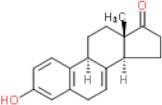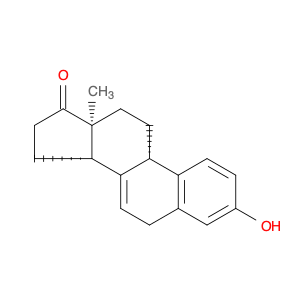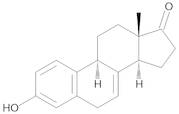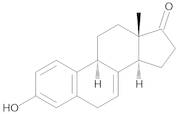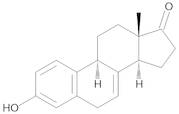CAS 474-86-2: Equilin
Description:Equilin is a naturally occurring estrogenic steroid, primarily derived from the urine of pregnant mares, and is classified as a conjugated estrogen. Its chemical structure is characterized by a phenolic A-ring and a ketone group at the C-17 position, which contributes to its biological activity. Equilin is often used in hormone replacement therapy and is known for its ability to bind to estrogen receptors, thereby exerting estrogenic effects in the body. It has been studied for its potential benefits in alleviating menopausal symptoms and its role in bone health. However, like other estrogens, it may also be associated with certain risks, including an increased likelihood of thromboembolic events and potential impacts on breast and endometrial tissue. The substance is typically administered in various formulations, including tablets and injections, and is subject to regulatory oversight due to its hormonal activity. As with any hormone therapy, careful consideration of benefits versus risks is essential in clinical practice.
Formula:C18H20O2
InChI:InChI=1S/C18H20O2/c1-18-9-8-14-13-5-3-12(19)10-11(13)2-4-15(14)16(18)6-7-17(18)20/h3-5,10,14,16,19H,2,6-9H2,1H3/t14-,16+,18+/m1/s1
InChI key:InChIKey=WKRLQDKEXYKHJB-HFTRVMKXSA-N
SMILES:O=C1CCC2C3=CCC4=CC(O)=CC=C4C3CCC12C
- Synonyms:
- (9Xi,14Xi)-3-Hydroxyestra-1,3,5(10),7-Tetraen-17-One
- 1,3,5,7-Estratetraen-3-ol-17-one
- 3-Hydroxyestra-1,3,5(10),7-Tetraen-17-One
- 3-Hydroxyoestra-1,3,5(10),7-Tetraen-17-One
- 7-Dehydroestrone
- Estra-1,3,5(10),7-tetraen-17-one, 3-hydroxy-
- NSC 10971
- Equilin




















